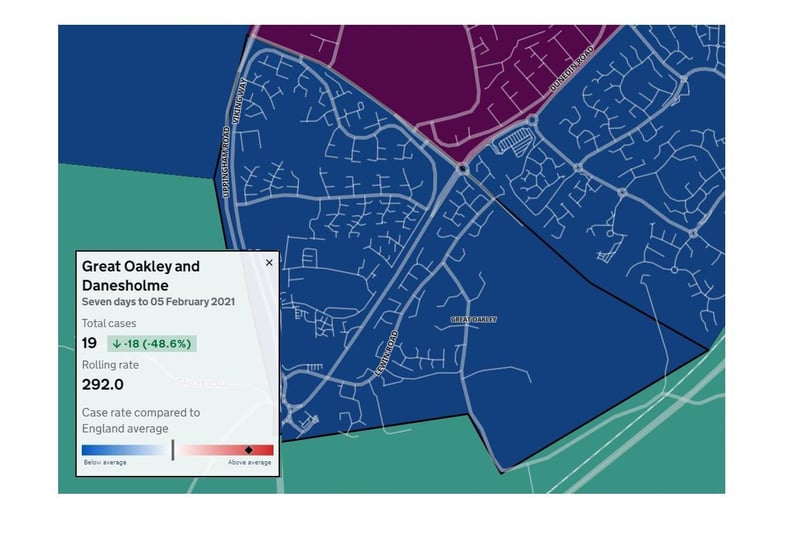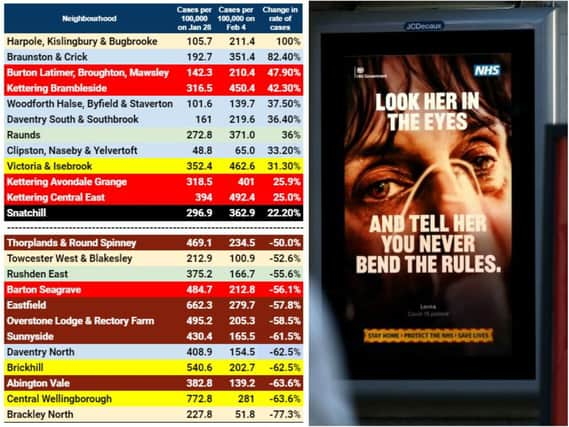These are the neighbourhoods of Northamptonshire where lockdown is clearly working — and those where it still has some ground to make up.
Government figures showed 25 areas of the county where Covid-19 case rates are still going up a month after Boris Johnson told the country to Stay At Home to slow the deadly virus' spread.
That represents nearly a third of the 91 Middle Layer Super Output Areas, each with around 8,000 people, analysts use to divide up the country and make comparisons.
Another 12 out of the total of 91 showed drops of more than 50 per cent in the week to February 5.
Two areas of Corby — Lodge Park and Kingswood — and Kings Heath & Spencer in Northampton all still have case rates in excess of 550 compared to the national average of around 202.5.
South Northamptonshire villages around Harpole, Kislingbury and Bugbrooke saw case rates DOUBLE, while four areas of Daventry District Council areas saw rises between a third in Clipston, Naseby and Yelvertoft and 82 per cent in Braunston and Crick.
Yet South Northants and Daventry also have six areas with case rates well under 100. Here is a run down of those neighbourhoods in Northampton, Corby, Kettering and Wellingborough which have seen the highest and lowest numbers.
Seven–day rates are expressed per 100,000 population calculated by dividing the weekly count by each area's population and multiplying by 100,000.
An interactive map shows current rates in every neighbourhood accessible by entering a postcode.
That represents nearly a third of the 91 Middle Layer Super Output Areas, each with around 8,000 people, analysts use to divide up the country and make comparisons.
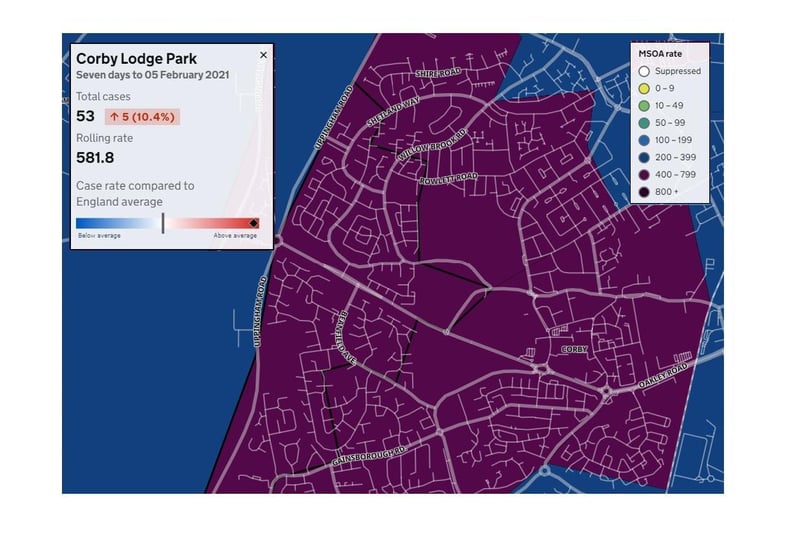
5.
HIGH — Lodge Park is one of the areas in Corby where case rates remain stubbornly high
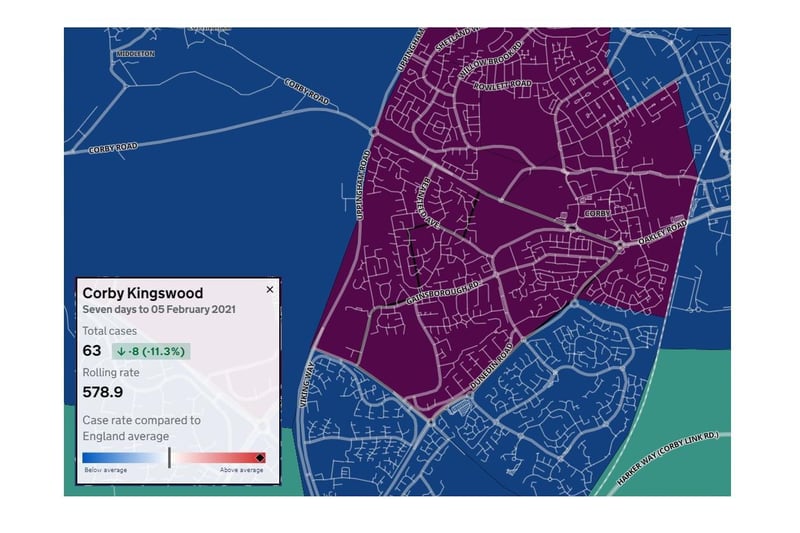
6.
HIGH — case rates in the Corby Kingswood neighbourhood are still among the highest in the country
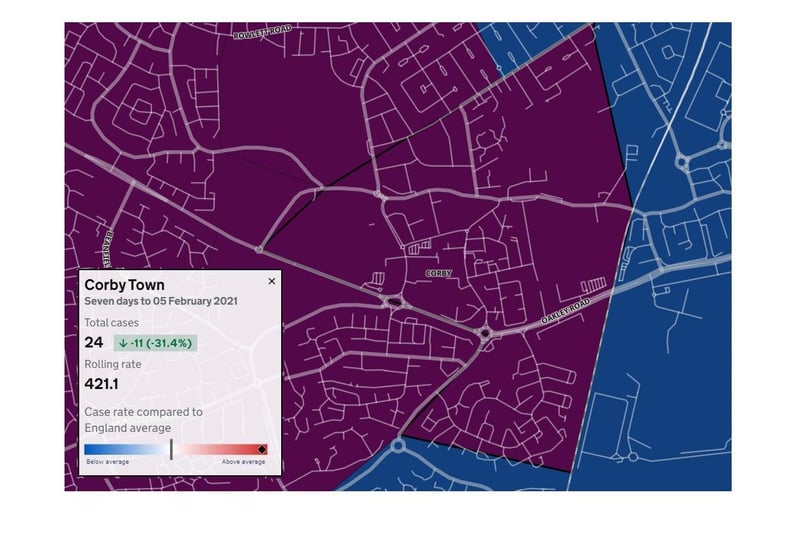
7.
HIGH — Corby Town's rate remains over 400 despite a significant drop according to latest figures
